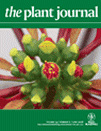 Olivier Voinnet, a well-known plant scientist at the ETH in Zurich, has notched his 7th retraction for a highly cited paper. The 2003 paper was pulled when “additional image manipulations” came to light after The Plant Journal issued a correction earlier this year.
Olivier Voinnet, a well-known plant scientist at the ETH in Zurich, has notched his 7th retraction for a highly cited paper. The 2003 paper was pulled when “additional image manipulations” came to light after The Plant Journal issued a correction earlier this year.
The retraction follows an investigation into — and then retraction of — several other papers co-authored by Voinnet. The authors originally corrected the paper after they learned one image had been duplicated, and repeating the experiment found the “same interpretation and conclusions” held true. But when the corresponding author learned of additional “data manipulation,” they decided to retract the paper altogether.
Here’s the retraction notice for “An enhanced transient expression system in plants based on suppression of gene silencing by the p19 protein of tomato bushy stunt virus:”
The above article, first published online on 28 February 2003 in Wiley Online Library (wileyonlinelibrary.com), and in volume 33, pp. 949–956, has been retracted by agreement between the authors, the journal Editor in Chief, Christoph Benning, and John Wiley & Sons Ltd.
The notice reprints much of the recent correction, published in June, then notes:
Since publication of the above notice the corresponding author has become aware of additional image duplications involving the loading control lanes of Figures 2g, 3a, 4e and 4f.
The authors accept that integrity of the scientific literature is compromised by the data manipulation and, for that reason, they wish to retract the article. However, researchers wishing to use the method described in this paper can still obtain the necessary clones from the corresponding author ([email protected]).
The authors apologise for having allowed this flawed article to be published.
The paper shows that a protein from the tomato bushy stunt virus can help plants express certain genes. It’s been cited 901 times since it was published in 2003, according to Thomson Scientific’s Web of Knowledge.
Corresponding author David Baulcombe, who works at the University of Cambridge, told us that he learned of the additional issues in the images via PubPeer, where users posted comments after the correction appeared.
We asked Baulcombe how the retraction will affect the field. He told us that there were ways to work around it:
There have been many papers describing the enhanced expression system based on p19 and so other researchers can cite these when they use this system. I kept the stocks of the p19 clone when I moved my lab to Cambridge and I will continue to provide them if asked.
He told us that Voinnet was responsible for the analysis on the paper:
Olivier Voinnet carried out those analyses and prepared the figures for the paper. I believe that this problem, beyond the need for the original correction, came to light after the institutional investigations of the other problems with Voinnet papers and so there has been no formal assessment.
We’ve reached out to Voinnet for more information. We’ll update this post with anything else we learn.
Hat tip: Rolf Degen
Like Retraction Watch? Consider making a tax-deductible contribution to support our growth. You can also follow us on Twitter, like us on Facebook, add us to your RSS reader, and sign up on our homepage for an email every time there’s a new post. Click here to review our Comments Policy.
Remarkable are the 900+ citations by very many authors over a period of 10+ years. The conclusions from the work must have been useful and supported by later findings. Was this after all valid research?
One more correction of a 2007 RNA paper.
http://rnajournal.cshlp.org/content/22/1/162.full
doi: 10.1261/rna.055012.115
RNA 2016. 22: 162-165
Corrigendum: Transitivity in Arabidopsis can be primed, requires the redundant action of the antiviral Dicer-like 4 and Dicer-like 2, and is compromised by viral-encoded suppressor proteins.
Guillaume Moissiard, Eneida Abreu Parizotto, Christophe Himber and Olivier Voinnet
RNA 13: 1268–1278 (2007)